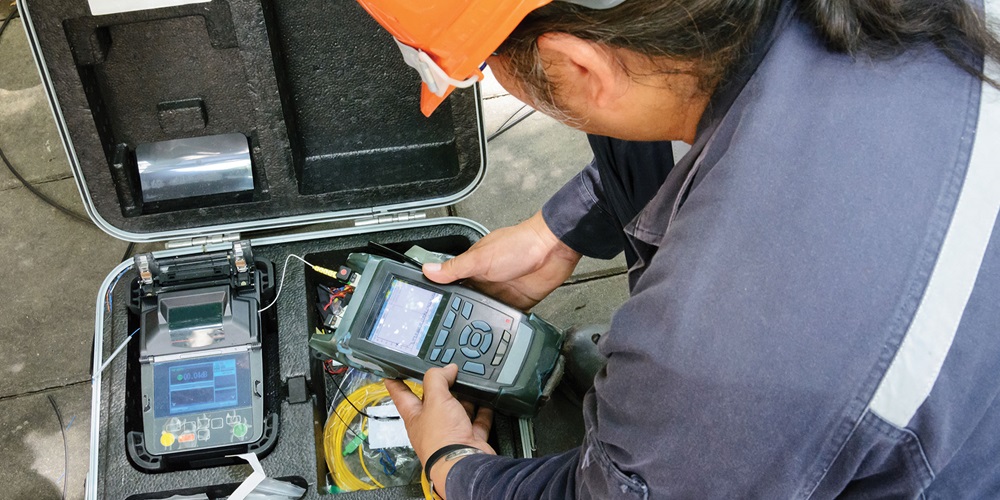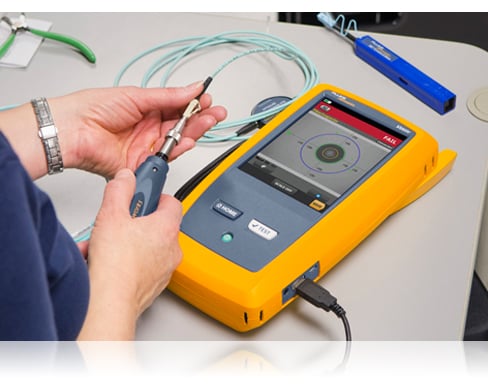High-performance fibre testing equipment delivers reliable material quality assessment.
High-performance fibre testing equipment delivers reliable material quality assessment.
Blog Article
The Duty of Optical Fiber Screening in Ensuring Top Quality and Efficiency in Connectivity Solutions
In today's rapidly advancing digital landscape, the importance of optical fiber testing can not be overstated, as it offers as a cornerstone for making certain the high quality and performance of connection solutions. As modern technology proceeds to advance, the future of optical fiber screening positions fascinating difficulties and opportunities that warrant closer exam.
Value of Optical Fibre Testing
The value of optical fiber testing can not be overstated in making certain the integrity and efficiency of interaction networks. As the backbone of contemporary telecoms, optical fibres help with high-speed information transmission, making their reliability essential to operational success. Evaluating offers as an aggressive step to identify prospective concerns such as signal loss, depletion, and physical damage, which can jeopardize network efficiency.
Normal screening enables the verification of setup top quality and the detection of problems that might impact information integrity - optical fibre diameter analyser. By employing rigorous testing procedures, network operators can alleviate the threats associated with network failures, including downtime and monetary losses. Furthermore, optical fibre testing guarantees compliance with industry requirements and regulations, improving the general high quality of service provided to end-users.
Inevitably, the organized analysis of optical fibers adds to the durability and effectiveness of interaction systems. It enables stakeholders to make enlightened choices pertaining to upkeep, upgrades, and troubleshooting. In a landscape where information is significantly crucial, focusing on optical fibre testing is vital to maintaining robust and efficient connectivity services, thus sustaining the needs of contemporary electronic atmospheres.
Kinds Of Optical Fiber Tests
Various screening techniques are employed to ensure the capability and dependability of optical fibres within interaction networks. These examinations can be generally categorized right into 2 major types: installation examinations and maintenance examinations.
Setup examinations are carried out promptly after the setup of optical fiber cable televisions to verify their performance and integrity - robotic vision. One of the most common installation examinations include Optical Time-Domain Reflectometry (OTDR) examinations, which assess the top quality of the fibre by recognizing faults or breaks, and end-to-end loss examinations, which determine the total optical loss from one end of the fiber to the other
Maintenance examinations, on the other hand, are done regularly to make sure recurring performance and identify potential problems over time. These include visual examination, which checks for physical damages or inappropriate installations, and continuity examinations, which confirm that the signal can travel through the fibre without disruption.
In addition, advanced tests such as Polarization Setting Diffusion (PMD) and Chromatic Dispersion (CD) tests can be conducted to assess the fibre's efficiency under various conditions. By using these diverse testing approaches, professionals can maintain high requirements of high quality and integrity in optical fiber networks.
Benefits of Regular Examining
Regular testing of optical fibres plays a vital duty in keeping the total efficiency and integrity of interaction networks. By conducting routine assessments, organizations can guarantee that their fibre optic setups satisfy market requirements and run effectively. This positive technique assists to identify potential weaknesses and degradation over time, permitting timely treatments prior to problems intensify.

Cost-effectiveness is one more benefit. By addressing minor issues early, companies can prevent the high prices related to major repairs or system failings. Routine screening additionally fosters conformity with governing requirements, ensuring that the network sticks to needed safety and security and performance requirements.
Typical Issues Identified
Identifying usual issues in optical fibre networks is essential for keeping optimal performance and dependability. Various aspects can add to disruptions, including physical damage, inadequate installation methods, and environmental influences.
Physical damage, such as bends, breaks, or abrasions, can considerably look at this website weaken signal top quality. Improper installation methods, consisting of excessive stress or poor securing of cords, may result in boosted depletion and loss of connection. Additionally, ecological elements such as temperature changes, dampness access, and rodent disturbance can compromise the stability of the fibre.
Connector concerns additionally often arise, with improper placement or contamination causing raised insertion loss. Splicing errors can present substantial signal deterioration if not executed with accuracy.

Attending to these usual concerns via normal optical fibre testing not just improves network integrity yet also enhances general efficiency, ensuring that connection remedies remain durable and efficient.
Future Fads in Checking
As the demand for high-speed connectivity continues to climb, the future of optical fiber screening will progressively concentrate on automation and progressed analytics. The assimilation of artificial intelligence (AI) and artificial intelligence (ML) in testing procedures will allow extra efficient information analysis and predictive maintenance, decreasing downtime and improving general network reliability. Automated screening options will certainly simplify the evaluation and accreditation of fiber networks, minimizing human mistake and boosting screening throughput.
Another substantial fad is the fostering of remote screening modern technologies. As the deployment of fibre networks broadens right into remote and underserved locations, remote screening abilities will certainly enable technicians to keep an eye on and diagnose network conditions without physical presence, therefore decreasing functional expenses and boosting feedback times.
In addition, there will certainly be a change in the direction of more detailed testing requirements that incorporate not just standard loss measurements yet additionally efficiency metrics such as latency and transmission capacity application. This holistic method will certainly assist in much better network management and optimization techniques.
As these straight from the source trends develop, the optical fiber screening landscape will not only improve the quality and performance of connection services however also sustain the expanding intricacies of modern interaction networks.
Final Thought
In verdict, optical fibre testing offers as a fundamental component in preserving the stability and performance of communication networks. The ongoing commitment to regular screening not just boosts information transmission but likewise lines up with sector standards, fostering dependability in network infrastructures.
Report this page